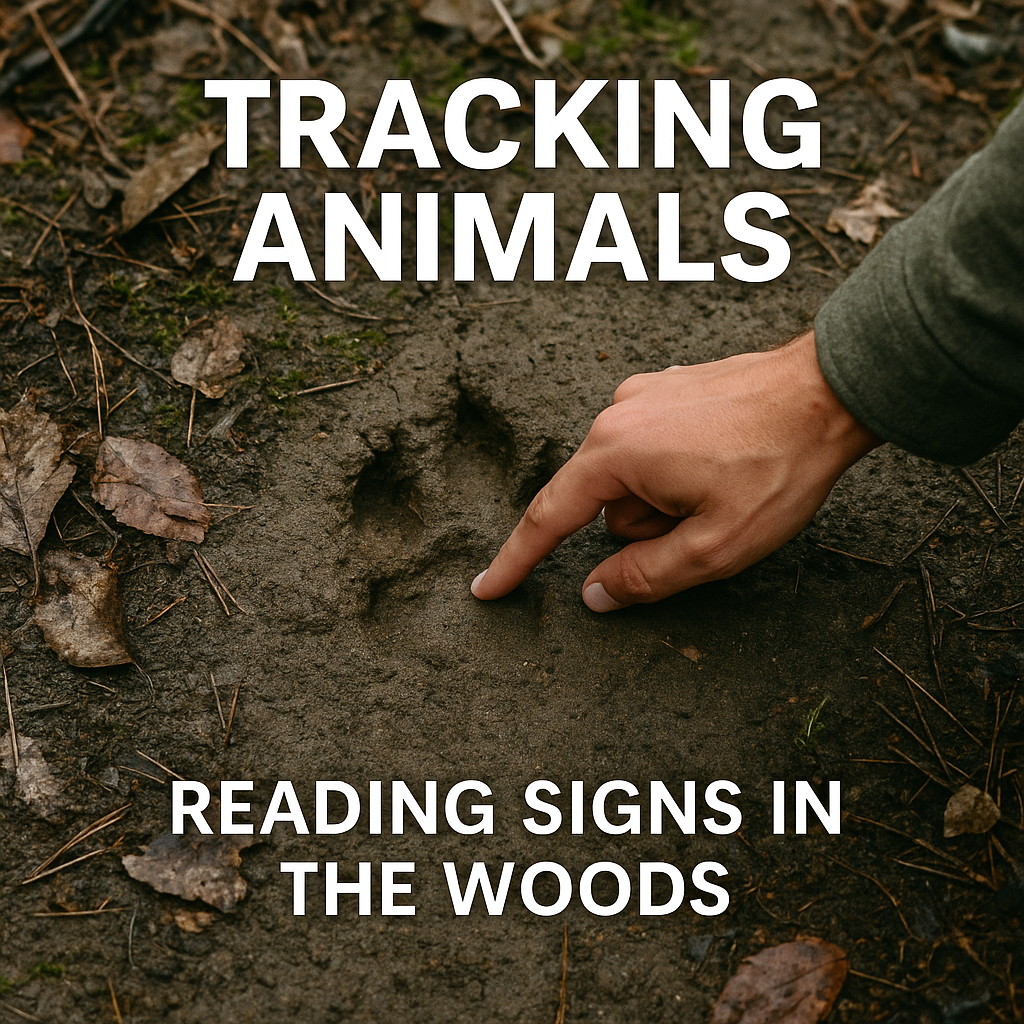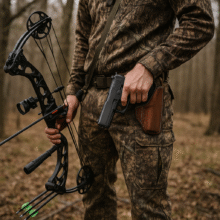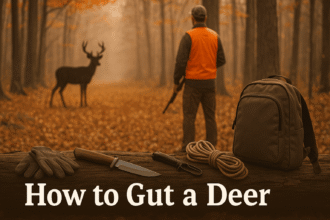Tracking Animals: Reading Signs for Hunting Success

Every skilled hunter knows that success in the woods isn’t just about carrying the right weapon or gear. The true art of hunting lies in understanding the land and the animals that live there. One of the oldest and most reliable skills hunters rely on is animal tracking the ability to read subtle signs in nature that reveal where animals have been, where they are headed, and how they behave.
Learning how to track animals by reading signs in the woods can make the difference between going home empty-handed or filling your tag. From hoofprints and scat to disturbed vegetation and feeding sites, the forest is full of clues if you know how to read them.
In this article, we’ll cover:
- Why animal tracking is important for hunters and outdoor enthusiasts.
- The essential signs to look for when tracking deer, elk, bear, and small game.
- How to distinguish between old and fresh tracks.
- Seasonal variations in animal behavior and tracking.
- Practical tips to improve your tracking skills.
Whether you’re a seasoned hunter or a beginner sharpening your skills, this guide will help you step into the boots of the animal you’re pursuing and greatly improve your chances of success in the field.
Table of Contents
- Why Animal Tracking Matters for Hunters
- The Basics of Animal Tracks
- Reading Other Animal Signs in the Woods
- Seasonal Tracking Tips
- Tracking Different Types of Game
- Tools to Improve Tracking Skills
- Pro Tips for Successful Tracking
- Common Mistakes Beginners Make
- Building Tracking into Your Hunting Strategy
- Final Thoughts
Why Animal Tracking Matters for Hunters
1. Locating Game Efficiently
Wild animals are experts at concealment. They move silently, bed in hidden cover, and leave little trace. Tracking skills allow hunters to shorten the search time and zero in on active areas instead of wandering blindly through the woods.
2. Understanding Animal Behavior
Every track and sign is a story. Tracks show gait and speed, scat reveals diet, and bedding areas tell you where animals feel safe. By learning to interpret these signs, hunters gain insight into feeding patterns, travel routes, and even the size of the herd or pack.
3. Ethical Hunting
Responsible hunters want to make quick, clean kills. Tracking not only helps you locate animals before the shot but also ensures you can recover wounded game afterward. Blood trails, broken branches, and disturbed leaves are often the only signs that lead to a successful recovery.
4. Building a Deeper Connection with Nature
Even if you’re not carrying a rifle or bow, tracking connects you with the natural world. It sharpens observation skills, increases patience, and deepens your understanding of ecosystems.
The Basics of Animal Tracks
Identifying Common Track Shapes
Each species leaves a unique footprint. Here are some key shapes to learn:
- Deer & Elk Tracks: Heart-shaped, narrow at the bottom with two pointed hooves. Deer tracks are 2–3 inches long, elk 4–5 inches.
- Bear Tracks: Large, rounded prints with five distinct toes and claw marks. Rear foot resembles a human footprint.
- Coyote & Dog Tracks: Oval-shaped with four toes and a clear pad. Coyote tracks are narrower and more symmetrical than dogs’.
- Rabbit Tracks: Paired hind feet land ahead of the smaller front feet when hopping.
- Turkey Tracks: Three long toes pointing forward and one pointing backward, resembling a “Y” shape.
Fresh vs. Old Tracks
- Fresh Tracks: Crisp edges, moist soil, or displaced snow. In warm weather, fresh tracks may still hold body heat detectable with your hand.
- Older Tracks: Weathered, eroded, filled with leaves or debris. In snow, older tracks are rounded and icy.
Reading Other Animal Signs in the Woods
1. Scat (Droppings)
Scat is one of the most telling signs.
- Deer Scat: Small, pellet-like droppings in clusters.
- Bear Scat: Large piles, often with visible berries, nuts, or hair.
- Predator Scat: Twisted, rope-like, often containing fur or bone fragments.
Fresh scat is moist and darker, while old scat is dry, gray, and crumbly.
2. Bedding Areas
Flattened grass, compressed leaves, or pine needles often indicate where deer or elk have rested. These beds are usually located in cover near food and water.
3. Feeding Signs
- Chewed Branches & Twigs: Deer often leave rough, torn edges when browsing shrubs.
- Gnawed Trees: Beavers leave distinctive tooth marks on stumps and logs.
- Acorn or Nut Shells: Squirrels leave piles of shells beneath trees.
4. Rubs & Scrapes
- Rubs: Male deer (bucks) rub antlers against trees, leaving shredded bark.
- Scrapes: Exposed soil where bucks paw the ground and urinate to mark territory.
5. Trails & Runways
Consistently trampled paths through grass or snow reveal established travel routes. Game trails often connect bedding areas to water and food sources.
6. Sounds & Smells
Sometimes the woods tell you stories through more than sight:
- A musky odor can indicate rutting deer.
- Freshly turned soil may carry the scent of wild hogs rooting.
- Distant calls, bugles, or gobbles can help pinpoint species and direction.
Seasonal Tracking Tips
Spring
- Look for muddy tracks near streams and wetlands.
- Fresh green vegetation attracts deer and elk.
- Turkey tracks and droppings are more common in open fields.
Summer
- Tracks are harder to see in dry soil; look for dust beds or trails in tall grass.
- Water sources are hotspots for tracks, scat, and wallows.
Fall
- Deer scrapes and rubs peak during the rut.
- Acorns, apples, and agricultural fields draw heavy feeding activity.
- Bear scat often contains nuts and corn as they fatten up for hibernation.
Winter
- Snow makes tracks easier to follow but requires distinguishing old from new.
- Bedding areas are more sheltered in dense cover.
- Predator activity is higher as prey becomes scarce.
Tracking Different Types of Game
Deer
Deer are the most tracked animal in North America. Focus on:
- Fresh hoofprints near water and feeding areas.
- Scrapes and rubs during rutting season.
- Bedding sites in thick cover or on south-facing slopes during winter.
Elk
Elk leave larger tracks than deer and travel in herds, leaving multiple signs close together. Look for:
- Wallows in muddy areas.
- Heavy trails through timber leading to meadows.
- Bugling sounds during the rut.
Bear
Bear tracking requires caution. Signs include:
- Huge footprints with toe marks.
- Claw scratches on trees.
- Scat filled with berries, seeds, or animal remains.
Always stay alert—tracking predators is dangerous.
Small Game (Rabbits, Squirrels, Turkey)
- Rabbit trails often zigzag to escape predators.
- Squirrel sign includes nut piles and stripped bark.
- Turkey tracks and wing drag marks near strutting zones are key spring indicators.
Tools to Improve Tracking Skills
- Binoculars: Spot disturbed vegetation and movement from a distance.
- Field Guide: Carry a regional animal track guide.
- GPS / Mapping Apps: Mark track locations to understand travel corridors.
- Trail Cameras: Verify species and movement times in tracked areas.
- Notebook: Record observations date, weather, track size, and direction.
Pro Tips for Successful Tracking
- Move Slowly and Quietly – Avoid crunching leaves or breaking twigs.
- Stay Downwind – Animals have strong senses of smell; approach from downwind whenever possible.
- Train Your Eyes – Don’t just look for full tracks; notice broken stems, shifted rocks, and bent grass.
- Practice Often – Track animals even when not hunting. Follow deer prints in snow or examine scat on hikes.
- Combine Signs – One sign alone may not be enough. Tracks, scat, and feeding areas together give a complete picture.
Common Mistakes Beginners Make
- Focusing Only on Tracks: Many hunters ignore scat, rubs, or feeding signs.
- Misjudging Track Age: Fresh vs. old signs often confuse beginners.
- Moving Too Fast: Tracking is about patience, not speed.
- Ignoring Wind Direction: Even if you track correctly, animals will flee if they smell you first.
Building Tracking into Your Hunting Strategy
A good hunter doesn’t just track when the opportunity arises they plan for it. Here’s how:
- Scout Preseason: Spend time before hunting season locating trails, feeding sites, and bedding areas.
- Use Cameras & Maps: Trail cams and topo maps help confirm your observations.
- Plan Ambush Points: Once you’ve identified travel corridors, set up treestands or blinds in those areas.
- Track After the Shot: Blood trailing is critical. Learn to recognize droplets, smears, or hair to follow a wounded animal ethically.
Final Thoughts
Tracking animals is more than a hunting skill it’s a language of the woods. Every track, rub, and scat pile tells part of a story that, when pieced together, guides you to your quarry. By practicing patience, sharpening your observation, and combining multiple signs, you’ll not only increase your success as a hunter but also deepen your respect for the wildlife you pursue.
Next time you step into the forest with your rifle or bow, remember: the hunt begins long before you see the animal. It begins with learning to read the signs nature leaves behind.







